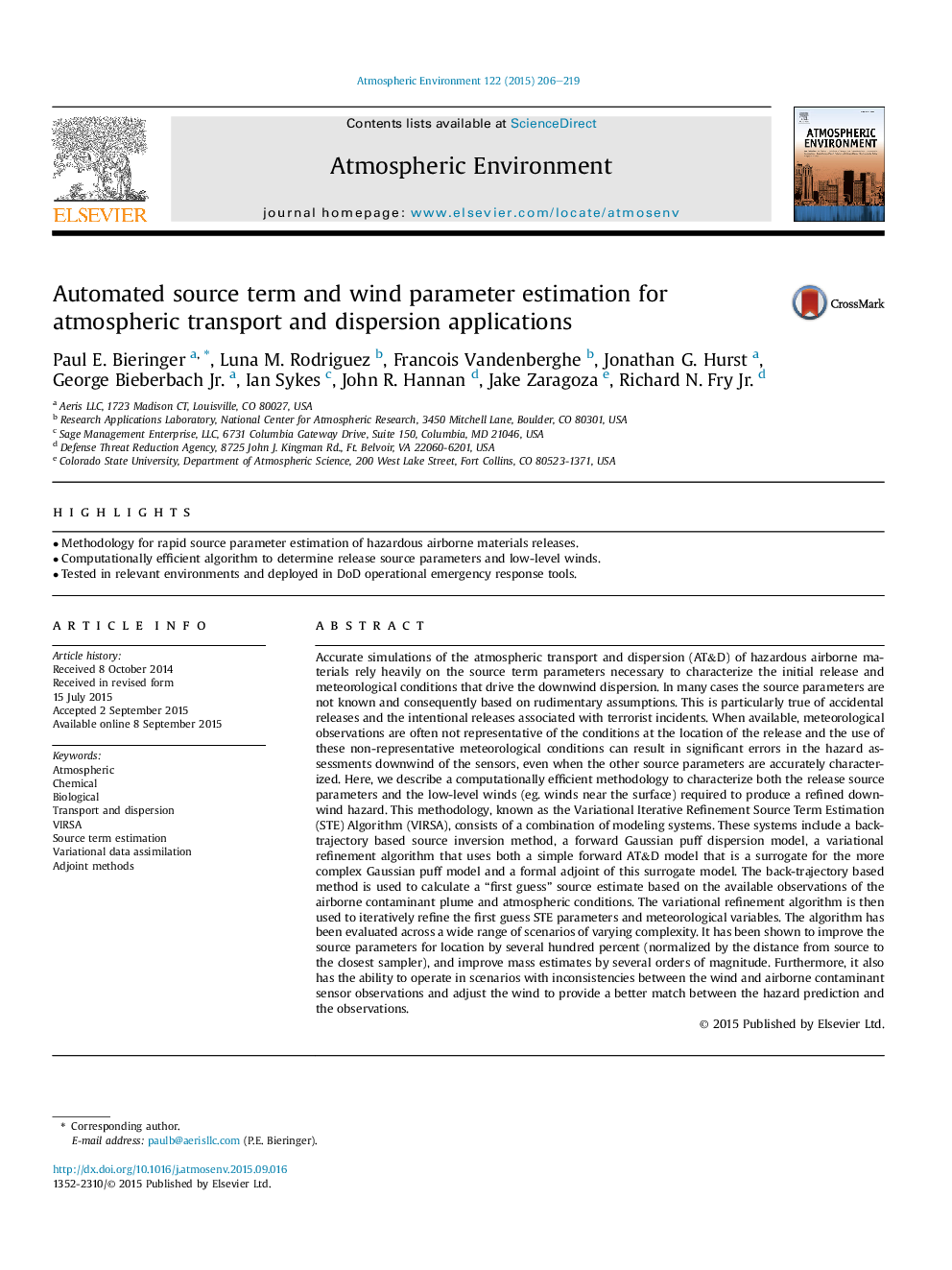| کد مقاله | کد نشریه | سال انتشار | مقاله انگلیسی | نسخه تمام متن |
|---|---|---|---|---|
| 6336980 | 1620349 | 2015 | 14 صفحه PDF | دانلود رایگان |
عنوان انگلیسی مقاله ISI
Automated source term and wind parameter estimation for atmospheric transport and dispersion applications
ترجمه فارسی عنوان
برآورد پارامتر منبع مبنا و باد برای برنامه های حمل و نقل جوی و کاربرد پراکندگی
دانلود مقاله + سفارش ترجمه
دانلود مقاله ISI انگلیسی
رایگان برای ایرانیان
کلمات کلیدی
موضوعات مرتبط
مهندسی و علوم پایه
علوم زمین و سیارات
علم هواشناسی
چکیده انگلیسی
Accurate simulations of the atmospheric transport and dispersion (AT&D) of hazardous airborne materials rely heavily on the source term parameters necessary to characterize the initial release and meteorological conditions that drive the downwind dispersion. In many cases the source parameters are not known and consequently based on rudimentary assumptions. This is particularly true of accidental releases and the intentional releases associated with terrorist incidents. When available, meteorological observations are often not representative of the conditions at the location of the release and the use of these non-representative meteorological conditions can result in significant errors in the hazard assessments downwind of the sensors, even when the other source parameters are accurately characterized. Here, we describe a computationally efficient methodology to characterize both the release source parameters and the low-level winds (eg. winds near the surface) required to produce a refined downwind hazard. This methodology, known as the Variational Iterative Refinement Source Term Estimation (STE) Algorithm (VIRSA), consists of a combination of modeling systems. These systems include a back-trajectory based source inversion method, a forward Gaussian puff dispersion model, a variational refinement algorithm that uses both a simple forward AT&D model that is a surrogate for the more complex Gaussian puff model and a formal adjoint of this surrogate model. The back-trajectory based method is used to calculate a “first guess” source estimate based on the available observations of the airborne contaminant plume and atmospheric conditions. The variational refinement algorithm is then used to iteratively refine the first guess STE parameters and meteorological variables. The algorithm has been evaluated across a wide range of scenarios of varying complexity. It has been shown to improve the source parameters for location by several hundred percent (normalized by the distance from source to the closest sampler), and improve mass estimates by several orders of magnitude. Furthermore, it also has the ability to operate in scenarios with inconsistencies between the wind and airborne contaminant sensor observations and adjust the wind to provide a better match between the hazard prediction and the observations.
ناشر
Database: Elsevier - ScienceDirect (ساینس دایرکت)
Journal: Atmospheric Environment - Volume 122, December 2015, Pages 206-219
Journal: Atmospheric Environment - Volume 122, December 2015, Pages 206-219
نویسندگان
Paul E. Bieringer, Luna M. Rodriguez, Francois Vandenberghe, Jonathan G. Hurst, George Jr., Ian Sykes, John R. Hannan, Jake Zaragoza, Richard N. Jr.,
